BMW IX Vs Tesla Model X: Which EV SUV Hits the Mark?

On this page, it’s two of the hottest luxury EV sport utility models on the scene today. The BMW iX vs Tesla Model X.
Both the BMW iX and Tesla Model X combine the space, flexibility and upscale content that today’s luxury SUV shopper seeks. But several key differences between these two all-electric, high-versatility haulers are worth noting.
Below, we’ll line the BMW iX and Tesla Model X up side by side for a comparison of their key specs, features, powertrains, and more. It’s all to help you make a better purchase decision when deciding between the pair.
Cabin Space
BMW iX: When it comes to head room, the BMW iX measures in with 42 inches up front, and 39.5 in the rear. Leg room clocks in at 40.2 inches up front, and 38.9 in the rear. Shoulder room measurements are 61.5 inches in front, and 58.3 in the rear.
SEE ALSO: 2022 BMW iX xDrive50 Review: Flagship For a New EraTesla Model X: The Tesla Model X delivers 41.7 inches of front head room, and 41 inches in the rear. Leg room comes in at 41.1 inches up front, and 38.7 in the rear. The Model X serves up 60.7 inches of front seat shoulder room, which trails to 56.9 inches in the rear.
Bottom Line: These machines are separated by fractions of an inch on most key interior measurements. The BMW iX leads the way with rear seat shoulder room, while the Model X delivers the superior rear seat head room figure.
Translation? The BMW’s rear seat can better accommodate wide-shouldered passengers, and the Tesla’s rear seat should prove best for taller ones.
Powertrains
BMW iX: The BMW iX is offered with two powertrain configurations tied to its trim grades. The iX XDrive50 runs an electric motor at each axle, delivering a combined 516 horsepower and 564 lb.-ft of torque. A single-speed, fixed-ratio transmission and AWD deliver 0-60 mph in 4.4 seconds.
The high-performing M60 variant features similar capabilities and AWD, though an output upgrade to 610 horsepower cranks the dial on thrills, and drops the 0-60 run down to a lung-squishing 3.6 seconds.
Tesla Model X: The Tesla Model X comes standard with a dual-motor AWD configuration good for a whopping 670 standard horsepower. That’s good for 0-60 mph in well under 4 seconds. The 1000-plus horsepower Model X Plaid adds a third motor and jacks torque output to the moon, giving it a supercar-like 0-60 run of about 2.5 seconds.
SEE ALSO: 2018 Tesla Model X Pros and ConsBottom Line: The Tesla Model X leads the pair where performance firepower is concerned. It has more standard horsepower than BMW’s hot-rod iX M60, and an available Plaid version with enough horsepower to accelerate like a modern supercar.
Range and Efficiency
BMW iX: Both the BMW iX xDrive50 and higher-performing M60 variants use a 111.5 kWh lithium-ion battery pack. Standard models deliver up to 324 miles of range per charge, while the M60’s more powerful driveline draws more quickly from the battery, reducing range to 288 miles.
Efficiency lists at 86 MPGe from the xDrive50 powertrain, and 77 MPGe from the M60. Expect slight variations to efficiency depending on the equipped wheel and tire package.
Tesla Model X: The Tesla model X is powered by a 100 kWh lithium-ion battery pack, with the standard dual-motor version delivering 360 miles of range, and the more potent Plaid version delivering 340.
Official efficiency is at 102 MPGe from the standard Model X, and 98 MPGe from the Plaid.
Bottom Line: The Model X leads this pair with better range and efficiency figures than the BMW iX. In fact, even the high-performing Model X Plaid achieves a higher efficiency score than the standard BMW iX in its xDrive50 configuration.
Cargo and Towing
BMW iX: The BMW iX doesn’t have a frunk under its hood, though the generous cargo hold and flat front and rear-seat floors help add roominess elsewhere. On measurements, look for 35.5 cubic feet of cargo capacity with all seats in use, expandable to 77.9 cubic feet with the second row seats folded down.
Maximum towing capacity rates at 5,500 lbs.
SEE ALSO: 2022 BMW iX Hands-On Preview: 5 Things You Need to Know About The Upcoming EVTesla Model X: The Tesla Model X measures in with 37.1 cubic feet of cargo space with all seats in use, and up to 91.6 cubic feet of cargo space with rear seating folded. Additionally, a 6.6 cubic foot ‘frunk’ adds additional storage capacity under the vehicle’s hood for further flexibility.
Towing capacity is rates at 5,000 lbs.
Bottom Line: Though the BMW iX delivers a slightly higher towing capacity, the Tesla Model X offers leading figures when it comes to cargo storage volume in both seats-up and seats-down measurements. The additional flexibility of the Tesla’s accessible frunk adds further appeal. The BMW iX’s frunk can’t open outside of a dealer setting.
BMW iX vs Tesla Model X: Safety
BMW iX: At this writing, the BMW iX has not been evaluated by either the IIHS or NHTSA.
To help drivers avoid a wide variety of hazardous situations, the iX is fitted with a range of assistance systems powered by a new generation of sensors and a new computing platform. Using five radars, five cameras and 12 ultrasonic sensors, the iX is able to accurately monitor its surroundings. The new safety and assist systems can detect cyclists and pedestrians during right-hand turns, and Steering and Lane Control Assistant features have been enhanced for better situational distancing.
Also available are a remote theft recorder, reversing assistant and exit warning function. The latter warns occupants to use caution when opening a door if the system detects a nearby pedestrian, cyclist or incoming motorist.
Tesla Model X: The Tesla Model X has been crash-tested by the NHTSA, with 2021 model year units earning the top score of 5/5 Stars and positioning this model amongst the safest SUVs on the road. These scores not only reflect high performance in impact testing, but also strong performance of the Model X’s crash prevention features. The IIHS has not yet tested the Tesla Model X.
Using the camera-based Tesla Vision system, the Model X keeps a watchful eye on the road with 360-degrees of camera coverage that can see 250 meters in every direction. Over the air software updates can improve safety system functionality and performance over time.
Bottom Line: Neither machine should disappoint when it comes to offering shoppers the very latest in advanced safety and driver assistance tech. At this writing, the Tesla Model X’s strong crash testing scores should inspire plenty of confidence amongst safety-minded shoppers.
Tech and Features
BMW iX: The BMW iX ushers in a new era of connected-car capability, driver interfaces, and infotainment capabilities. The latest iDrive interface is cleaner and easier to navigate, with a high-end curved display screen and excellent graphics giving users a vivid, animated experience that’s similar to a high-end tablet.
Drivers can reconfigure the instrument cluster on the fly using steering-wheel mounted controls, and an advanced voice-recognition system makes it easy to access and manipulate hundreds of functions with a simple spoken command.
Power cinching doors and a push-to-tint sunroof add appeal for gadget aficionados, and each available drive mode features a digital sound experience designed to enhance the driver’s emotional connection with the car.
Tesla Model X: Up front, Tesla’s signature touch-screen interface is powered by a monster processor that enables in-car wireless gaming with exceptional graphics, as well as the ability to control and monitor a multitude of vehicle functions on a single interface. Wireless charging pads and multi-device Bluetooth join USB-c power ports at each seat for seamless Smartphone connectivity.
Features like Summon and Autopark allow drivers to park or retrieve their vehicle with the press of a button. Advanced camera system and high-resolution displays take the stress out of parking, too.
Bottom Line: Shoppers intent on the latest in tech, gadgets and connected-car features won’t be left out in the cold by either model in this comparison. The BMW iX packs innovative and high-end features that are delightfully useful. The Model X’s well-honed and approachable tech package is easy for new drivers to learn and connect with, while making previous Tesla owners feel right at home.
BMW iX vs Tesla Model X: Styling
BMW iX: Though the iX’s grille stirs controversy in some circles, the model is undeniably unique in delivering signature BMW styling touches with a new, more modern flair. The overall shape and size communicate a welcoming vault, while the open and airy cabin effectively invites occupants to relax, lounge and socialize on the go. Inside or out, the BMW iX’s styling looks to turn heads, stir pride of ownership, and instantly convey brand identity from a glance. Don’t miss the animated LED lighting effects when approaching, locking or unlocking the car after dark, too.
Tesla Model X: On styling, the Model X uses simpler shapes and cleaner lines for a smooth-looking SUV that’s crisp and classy without looking busy or cluttered. Signature Tesla styling elements convey brand identity with ease, and the tall roof and low floor stretch the Model X’s shape vertically, communicating the promise of space within. In typical Tesla fashion, the cabin is minimal, upscale, and very tidy. It allows drivers to focus on relaxing, socializing and taking in the scenery.
SEE ALSO: EV with most Cargo Space: Top 10 ListBottom Line: Whether you prefer the flashier and more distinctive look of the iX, or the cleaner and smoother approach of the Model X, both the BMW and Tesla deliver looks that stand out amongst the heavily-populated luxury SUV scene.
Pricing
BMW iX: The BMW iX opens the bidding at $84,100 for the xDrive50 model, while the M60 version comes in from $108,900.
Standard kit includes Lane Departure Warning, Active Blind Spot Detection, and choreographed welcome lighting. There’s also on-screen animations thanks to the next-generation Comfort Access system which can detect the driver approaching the vehicle while it’s parked. A power tailgate, climate controlled massage seats, and a premium stereo system help give drivers a strong taste of the motoring high-life every time they take the wheel.
Tesla Model X: Pricing for the Tesla Model X starts at $120,990 in its standard Long Range configuration, and $138,990 for the extreme-performance Plaid version.
On board, look for a premium stereo system, a 15-inch touch-screen display, heated and ventilated front seats, electric fold-flat rear seats, power tilt steering, adaptive cruise control, an air filtration system, mobile hotspot, and more.
Bottom Line: The BMW iX offers EV luxury SUV shoppers a lower starting price than a standard Tesla Model X, though the Model X offers better range, efficiency, performance and space, regardless of configuration. Both models cover today’s EV shopper nicely, though the Tesla turns in the superior EV experience where efficient performance is concerned, for shoppers with deeper pockets.
BMW iX vs Tesla Model X: In Conclusion
Shoppers should find both the Tesla Model X and BMW iX to offer a solid return on their investment where style, performance, capability and tech are concerned. Long-time BMW owners will find the iX a remarkable new take on a BMW utility model, with many features, functions and interfaces that’ll make them feel right at home.
Those after the ultimate all-electric experience where performance and efficiency are concerned may lean towards the Model X for its superior range, power output, energy efficiency and interior volume.
Both models are machines of few weaknesses and many strengths, and both represent some great ways to spend your dollars on an electric luxury SUV in 2022.
Become an AutoGuide insider. Get the latest from the automotive world first by subscribing to our newsletter here.

Justin Pritchard, an award-winning automotive journalist based in Sudbury, Ontario, is known for his comprehensive automotive reviews and discoveries. As a presenter, photographer, videographer, and technical writer, Justin shares his insights weekly through various Canadian television programs, print, and online publications. In 2023, Justin celebrated a significant milestone, airing the 600th episode of his TV program, AutoPilot. Currently, he contributes to autoTRADER.ca, Sharp Magazine, and MoneySense Magazine. His work as a technical writer, videographer, presenter, and producer has been recognized with numerous awards, including the 2019 AJAC Video Journalism Award and the 2018 AJAC Journalist of the Year. Justin holds a Bachelor of Commerce (Hons) from Laurentian University, which he earned in 2005. His career in automotive journalism began that same year at Auto123.com. Since then, he has written one of the largest collections of used car buyer guides on the internet. His passion for photography, nurtured from a young age, is evident in his work, capturing the scenic beauty of Northern Ontario. Living in a region with a particularly harsh winter climate has made Justin an expert on winter driving, winter tires, and extreme-weather safety. Justin’s significant achievements include: 2019 AJAC Video Journalism Award (Winner) 2019 AJAC Road Safety Journalism Award (Runner-Up) 2019 AJAC Automotive Writing (vehicle review topics) (Winner) 2019 AJAC Automotive Writing (technical topics) (Winner) 2018 AJAC Journalist of the Year You can follow Justin’s work on Instagram @mr2pritch and YouTube @JustinPritchard.
More by Justin Pritchard



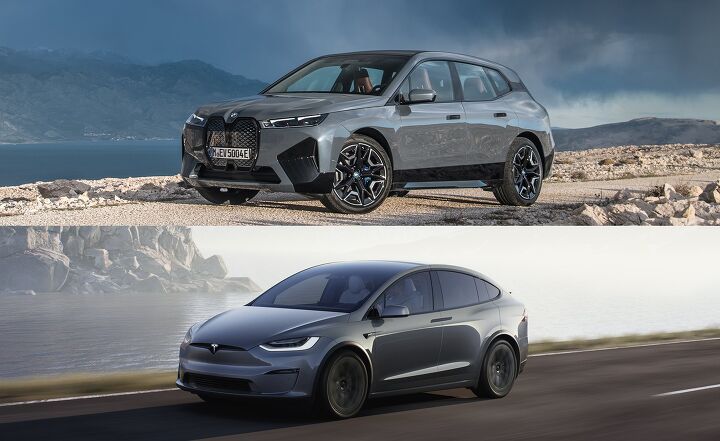
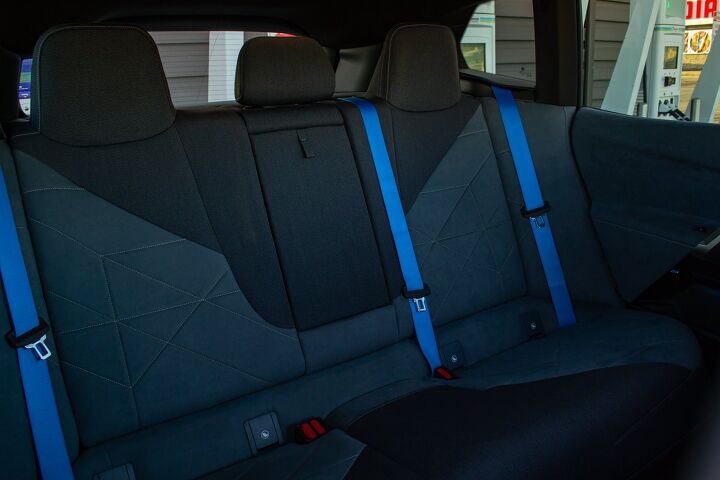





























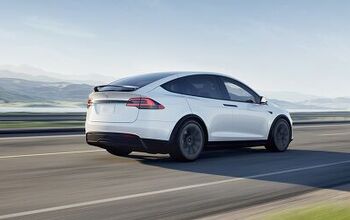

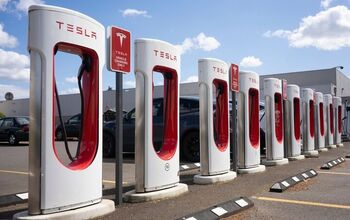
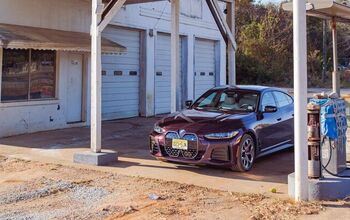

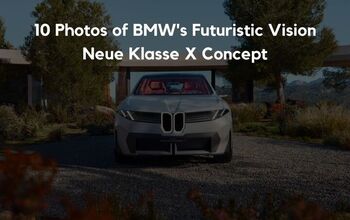
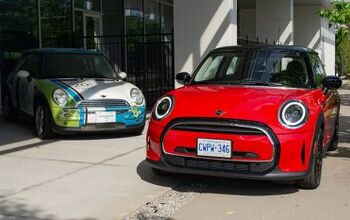
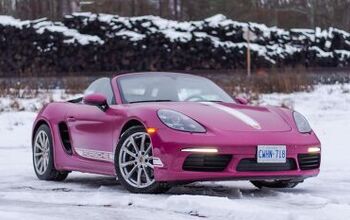




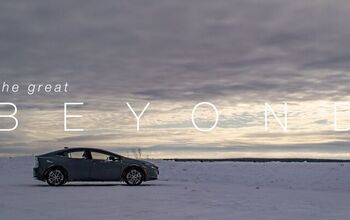

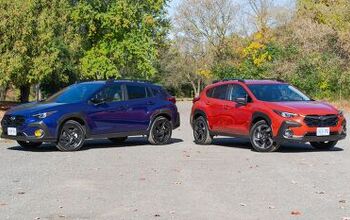
Comments
Join the conversation